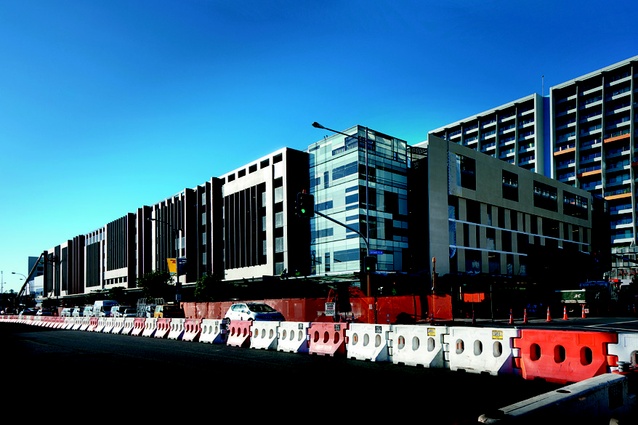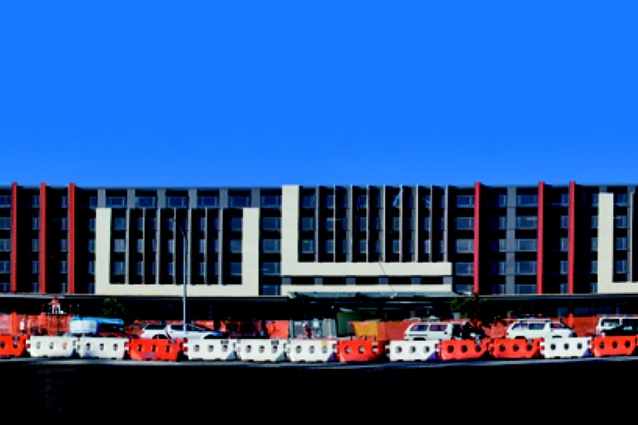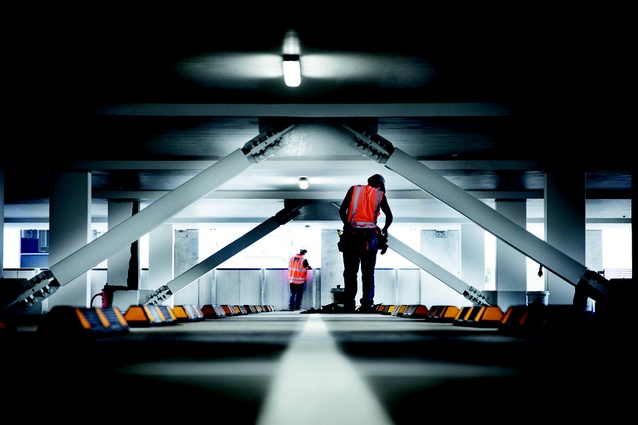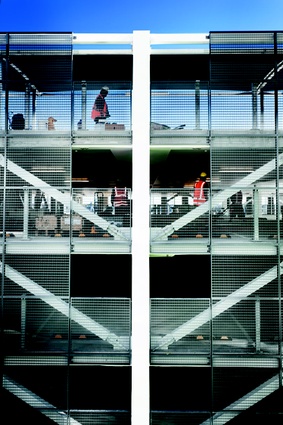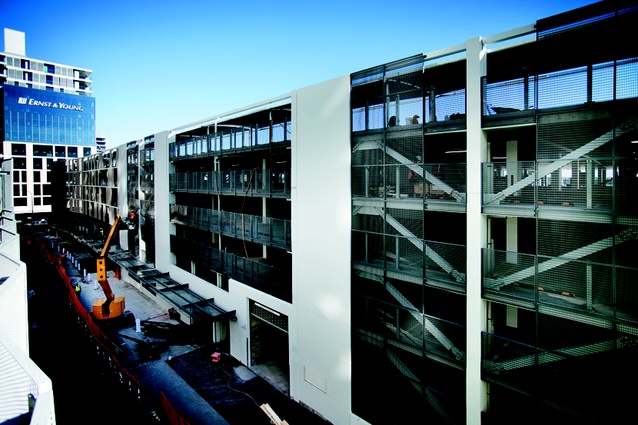Britomart’s brand new car park
The latest addition to Britomart developer Cooper & Company’s 5.8ha urban precinct near Auckland’s waterfront populated with offices, public spaces, bars and restaurants is the Britomart Car Park Building due to open in April with spaces for 1230 cars, De Grundi Bikes retail at ground level and a Les Mills gym.
The Britomart Car Park Building is the biggest use of post-tension concrete in New Zealand to date. It ambitiously aims to be the “best car parking building in Australasia” according to development manager Sarah Ballantyne. Hawkins started work on it in December 2009 and completed it on April 18.
The building is future-proofed so that apartments can be added on later by incorporation of sacrificial floors at levels three and five. Whole gridlines of concrete could be removed without affecting the structure of the rest of a floor to make way for mezzanine style apartments that would have stunning sea views, given the waterfront location.
Development at the site was subject to strict height rules with a maximum of 20.6 metres. To maximise interior space within that height limit, post tension concrete was used in construction. With 36,000sq m of concrete it was the largest project in the country to use this technique and meant that less reinforcing was needed and slabs were thinner, reduced in size from around 250mm to 130mm.
The car park was specifically designed to be more attractive and safe than the average car park. The 1230 parking space building is fitted with tiling to match the precinct’s East office building entrance and all interior concrete will be painted white to maximise light for safety and comfort. Services offered in the valet parking at Britomart Car Park Building include cleaning cars, arranging a Warrant of Fitness, getting dry cleaning done, even picking up flowers.
Externally, the building has architectural major fins made from terracotta tile and aluminium fins. Shop front window systems at ground floor have aluminum balustrades and galvanised treatments. Because the building takes up all available space on its site - something that made life tricky at times for Hawkins with limited room for loading - it also means there is no space for water storage or reticulation systems.

